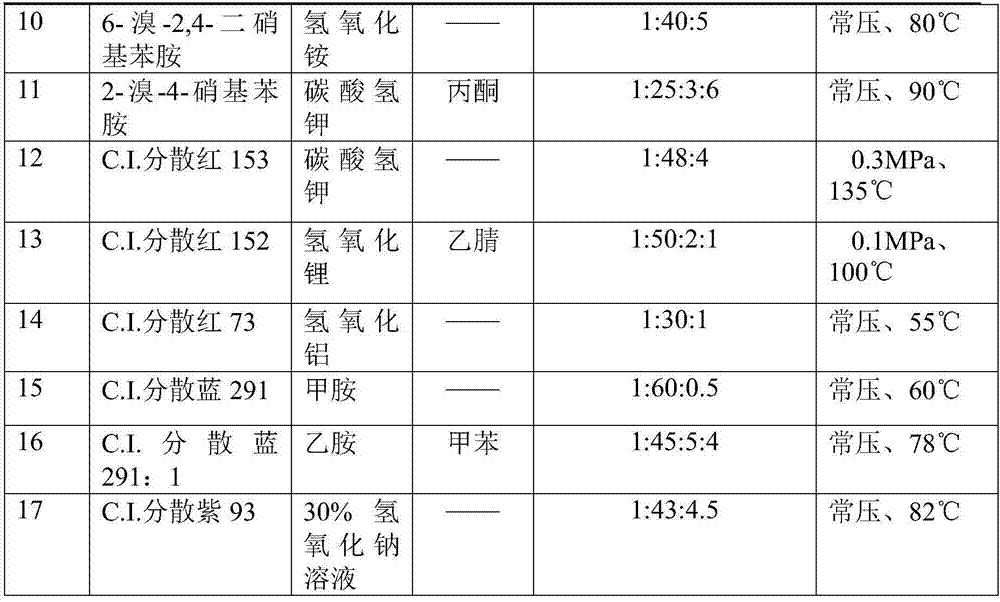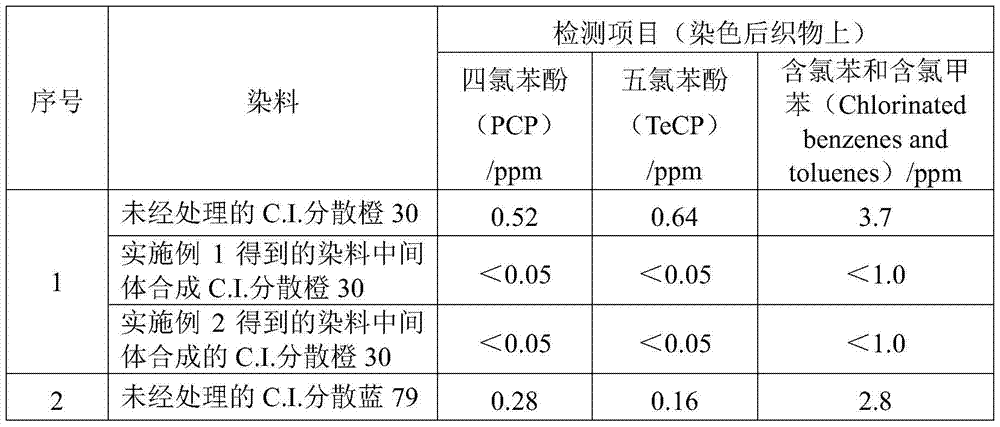A kind of eco-friendly processing method of dyestuff or dyestuff intermediate
A dye intermediate, environmental protection treatment technology, applied in the direction of organic dyes, carboxylic acid nitrile purification/separation, amino compound purification/separation, etc., can solve the problem of content not meeting the limit requirements
- Summary
- Abstract
- Description
- Claims
- Application Information
AI Technical Summary
Problems solved by technology
Method used
Image
Examples
Embodiment 1
[0019] In a 500ml three-necked flask, add 135g of water, then add 2,6-dichloro-4-nitroaniline (p-nitroaniline synthesized through chlorination) 40g (percentage, 0.19mol) and 30% hydroxide 25g (0.19mol) of sodium solution, heated to 60°C under normal pressure, stirred and reacted at this temperature for 3 hours. After the reaction, it was made by suction filtration and washing with water.
Embodiment 2
[0021] Put 85g of water into a 500ml three-necked flask, then add 50g of 2,6-dichloro-4-nitroaniline (commercially available product), 0.24mol, 20% ammonia 75g (0.43mol) and dichloride 100g (1mol) of ethane, the normal pressure is raised to 75℃, and the reaction is stirred at this temperature for 4 hours. After the stirring time is up, the organic solvent dichloroethane is recovered by distillation under normal pressure at 60~95℃, and the recovered dichloroethane It can be applied next time, and then the reaction solution is filtered and washed with water.
Embodiment 3~17
[0023] According to the method described in the above embodiment, mix the dye or dye intermediate, water, alkali agent and organic solvent in the proportions shown in Table 1 (the amount of water in the table is the amount of water added separately), and then according to the respective reaction conditions The reaction is stirred for 3 to 5 hours. If an organic solvent is added, the organic solvent is recovered by distillation under reduced pressure at 60 to 95°C after the reaction, and finally the reaction solution is filtered and washed with water.
[0024] Table 1
[0025]
[0026]
PUM
 Login to View More
Login to View More Abstract
Description
Claims
Application Information
 Login to View More
Login to View More - R&D
- Intellectual Property
- Life Sciences
- Materials
- Tech Scout
- Unparalleled Data Quality
- Higher Quality Content
- 60% Fewer Hallucinations
Browse by: Latest US Patents, China's latest patents, Technical Efficacy Thesaurus, Application Domain, Technology Topic, Popular Technical Reports.
© 2025 PatSnap. All rights reserved.Legal|Privacy policy|Modern Slavery Act Transparency Statement|Sitemap|About US| Contact US: help@patsnap.com



